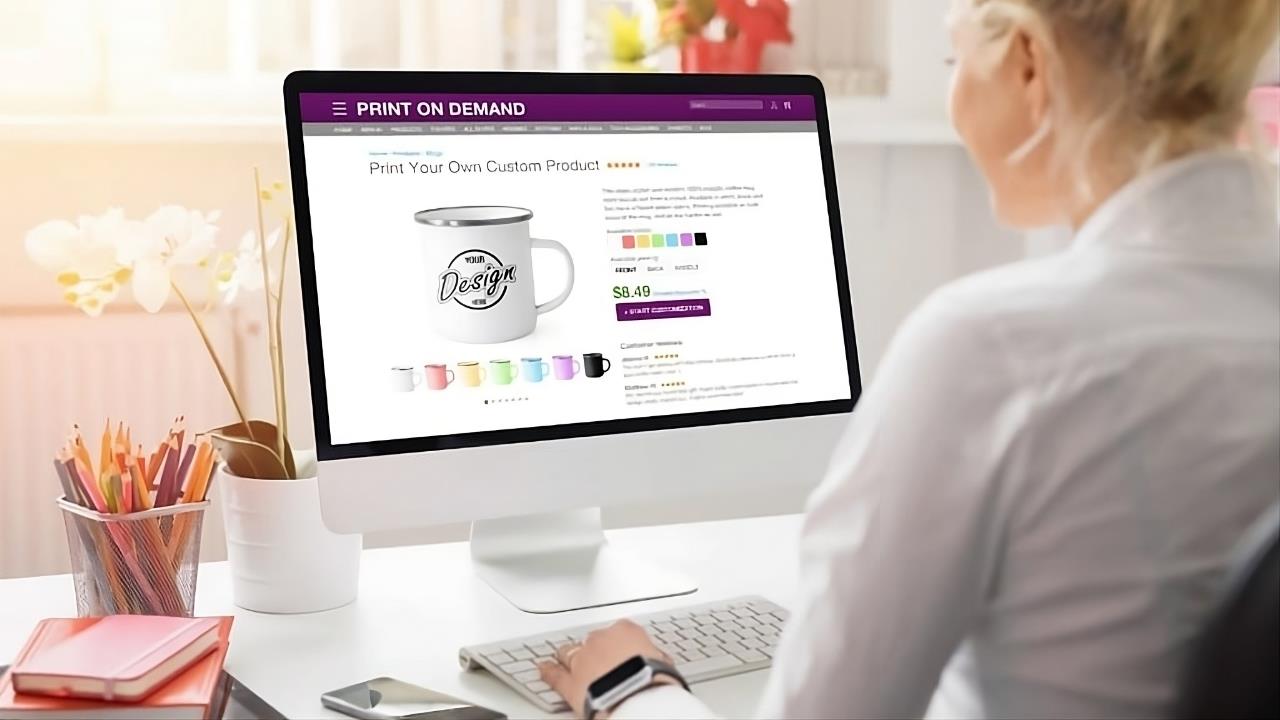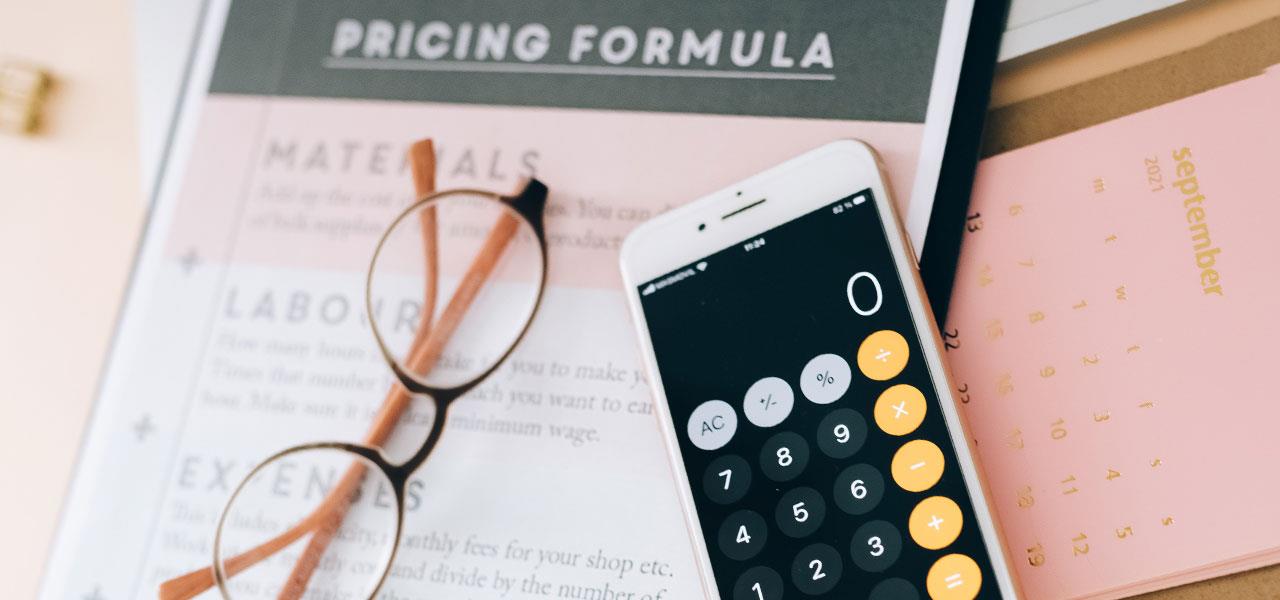
Topics
Throughout this course, we’ve been building a foundation for you to grow from. We began by selecting a niche and targeting your audience, followed by designing and optimizing your products, choosing the right platforms and services, pricing your offerings competitively, implementing marketing strategies, and finishing with analytics and KPIs to optimize your store.
This final section brings all of those pieces together to start and operate your own e-commerce business.
Common Beginner Mistakes to Avoid

As we wrap up this course, let’s review the most common mistakes that trip up new POD sellers. By recognizing these pitfalls now, you can avoid the costly errors that derail many beginners and focus your energy on building a profitable business from day one.
Mistake #1: Designing Without Market Research
- What happens: You create designs you love, but nobody buys them
- From Section 2: Always validate your niche before designing
- Better approach: Research what’s selling, then create designs for that market
Mistake #2: Choosing Suppliers Based Only on Price
- What happens: Poor quality products lead to returns and bad reviews
- From Section 1: Quality and reliability matter more than saving $1 per item
- Better approach: Order samples, test quality, and read reviews from other sellers
Mistake #3: Underpricing Your Products
- What happens: You work hard but make no profit, or lose money on every sale
- From Section 5: New sellers often forget platform fees, shipping costs, and their time
- Better approach: Calculate ALL costs first, then add a reasonable profit margin
Mistake #4: Trying to Sell Everywhere at Once
- What happens: You spread yourself too thin and do poorly on all platforms
- From Section 4: Each platform has different requirements and audiences
- Better approach: Master one platform first, then expand to others
Mistake #5: Launching Without a Marketing Plan
- What happens: Great products that nobody ever sees or finds
- From Section 7: “Build it and they will come” doesn’t work online
- Better approach: Plan your marketing before you launch, not after
Mistake #6: Expecting Overnight Success
- Reality check: Most successful POD businesses take 3-6 months to see consistent sales
- Common error: Giving up after 2-3 weeks of slow sales
- Better mindset: POD is a business, not a get-rich-quick scheme
 According to an article by Aleksandra Rosa of Printful, 17 Critical Print-on-Demand Mistakes and How to Avoid Them, 96% of surveyed customers believed they made mistakes building their brand and “creating a marketing strategy,” “identifying the right target audience,” and “creating designs” led their list of challenges. Read the full article to learn more about common mistakes and how you can avoid them.
According to an article by Aleksandra Rosa of Printful, 17 Critical Print-on-Demand Mistakes and How to Avoid Them, 96% of surveyed customers believed they made mistakes building their brand and “creating a marketing strategy,” “identifying the right target audience,” and “creating designs” led their list of challenges. Read the full article to learn more about common mistakes and how you can avoid them.
Your Launch Checklist

Thinking of starting your POD business? This checklist highlights the essential steps to take your POD business from concept to first sale. Each step builds on the previous one, creating a systematic approach that reduces overwhelm and increases your chances of success. Use this as your roadmap to navigate the launch process confidently, knowing that each action you take is moving you closer to a functioning, profitable POD business.
- Choose Your Niche
- Research and Select Suppliers
- Create Your Design
- Selling Platform
- Pricing
- Create Product Listing
- Plan Your Marketing
- Launch
- Next Steps
Step 1: Choose Your Niche

Your niche selection forms the foundation of everything else you’ll do in your POD business. This step involves applying the market research and audience targeting concepts we covered in Section 2 to identify a specific market segment that offers both personal interest and profit potential. The goal is to find the sweet spot where your creative abilities, market demand, and competition levels align favorably.
Why this matters: A well-chosen niche allows you to create targeted designs that resonate with specific customers, making your marketing more effective and your products more appealing. Generic designs that try to appeal to everyone typically perform poorly because they don’t solve specific problems or connect with particular interests.
Action Items:
- Complete niche validation research for 3-5 potential niches
- Analyze competition levels and market demand for each option
- Assess your knowledge and interest in each niche
- Select 1-2 specific niches that show strong potential
- Document your target customer characteristics and preferences
Focus on: Finding niches with proven demand but manageable competition levels where you can bring authentic knowledge or perspective.
Step 2: Research and Select Your Suppliers

Supplier selection directly impacts your product quality, customer satisfaction, and profit margins. This step involves evaluating the POD platforms and services we discussed in Section 1, comparing their capabilities against your specific product needs and business goals. Your supplier becomes your manufacturing partner, so this decision affects every aspect of your customer’s experience.
Why this matters: The right supplier relationship ensures consistent quality, reliable fulfillment, and competitive pricing. Poor supplier choices lead to customer complaints, returns, and a damaged reputation. Different suppliers excel in different areas, so matching your needs to their strengths is crucial for long-term success.
Action Items:
- Research 3-4 major POD suppliers that serve your chosen niche
- Compare product quality, pricing, shipping times, and geographic coverage
- Order samples from your top 2-3 supplier choices
- Evaluate integration capabilities with your planned selling platform
- Select primary and backup suppliers based on your quality and cost requirements
Focus on: Quality consistency and reliable fulfillment, not lowest price, since customer satisfaction drives long-term profitability.
Step 3: Create Your Designs

Design creation transforms your niche knowledge into sellable products using the technical requirements and creative principles covered in Section 3. This step is where your understanding of your target market combines with the technical specifications needed for quality printing. Your designs must appeal to customers while meeting the technical standards for professional production.
Why this matters: Your designs are your primary differentiator in a competitive market. Well-executed designs that solve customer problems or express their identity will consistently outperform generic artwork. Technical quality ensures your creative vision translates properly to the final printed product.
Action Items:
- Create 5-10 designs that specifically target your chosen niche
- Ensure all designs meet technical specifications for file format, resolution, and color requirements
- Verify copyright compliance and originality of all design elements
- Test designs with mockup tools to visualize final products
- Gather feedback from potential customers before finalizing design selection
Focus on: Creating designs that solve specific problems or fulfill particular desires of your target customers rather than general appeal.
Step 4: Set Up Your Selling Platform

Your storefront will define how customers will discover and purchase your products. This step involves choosing between marketplace and standalone store options based on the platform comparison we covered in Section 4, then properly configuring your chosen platform for optimal performance. Your platform becomes your primary sales channel, so proper setup is essential for visibility and conversion.
Why this matters: Your platform choice affects your visibility, fee structure, customer acquisition, and long-term business growth. Proper setup ensures customers can easily find, evaluate, and purchase your products while providing you with the tools needed to manage orders and customer relationships effectively.
Action Items:
- Choose your primary selling platform based on your niche and business goals
- Create and optimize your store account with compelling branding and descriptions
- Set up payment processing and configure tax settings appropriately
- Write clear store policies for shipping, returns, and customer service
- Connect your store to your chosen POD supplier through available integrations
Focus on: Platform features that support your specific niche and target customers rather than trying to appeal to the broadest possible audience.
Step 5: Price Your Products

Your pricing strategy determines your profitability and market positioning using the cost analysis and pricing approaches we discussed in Section 5. This step involves calculating all your true costs, understanding your market’s price sensitivity, and setting prices that ensure sustainable profit margins while remaining competitive. Proper pricing supports long-term business viability.
Why this matters: Incorrect pricing is one of the fastest ways to fail in the POD business. Pricing too low means working without profit; pricing too high means no sales. Understanding all costs and market dynamics allows you to price strategically for both immediate sales and long-term sustainability.
Action Items:
- Calculate total costs for each product, including base cost, shipping, platform fees, and your time
- Research competitor pricing for similar products in your niche
- Determine profit margins that justify your time investment
- Set prices that cover all costs while remaining competitive in your market
- Plan pricing strategies for promotions and volume discounts
Focus on: Sustainable profit margins that account for all costs rather than competing solely on price, which erodes profitability.
Step 6: Create Your Product Listings

Product listing creation transforms your designs into discoverable, purchasable products using the optimization techniques covered in Section 7. This step involves writing compelling titles and descriptions, selecting effective keywords, and presenting your products in ways that both search algorithms and customers will find appealing. Well-optimized listings are essential for visibility in competitive marketplaces.
Why this matters: Even excellent products won’t sell if customers can’t find them or don’t understand their value. Effective listings serve dual purposes: helping customers discover your products through search and convincing them to purchase once they find you. Poor listings result in low visibility and weak conversion rates.
Action Items:
- Write SEO-optimized titles that include relevant keywords customers use to search
- Create detailed product descriptions that highlight benefits and address customer concerns
- Select high-quality product photos or mockups that showcase your designs effectively
- Choose relevant tags and categories that help customers find your products
- Test listing performance and refine based on view and conversion data
Focus on: Balancing search optimization with customer appeal, ensuring your listings perform well in search results while convincing browsers to become buyers.
Step 7: Plan Your Marketing Approach

A marketing plan will establish how you’ll attract customers to your products using the strategies and channels we explored in Section 7. This step involves selecting appropriate marketing channels for your niche, planning content that resonates with your target audience, and creating systems for consistent promotion. Effective marketing is essential for POD success since customers must discover your products among thousands of alternatives.
Why this matters: Outstanding products without marketing remain invisible to potential customers. Strategic marketing creates awareness, builds trust, and drives traffic to your listings. Consistent marketing efforts compound over time, creating sustainable customer acquisition that supports business growth.
Action Items:
- Select 1-2 primary marketing channels that align with your target customer preferences
- Create social media accounts and profiles that reflect your brand and niche focus
- Plan initial content that showcases your products and provides value to potential customers
- Identify relevant communities, groups, or influencers in your niche for potential partnerships
- Establish a consistent posting schedule and content creation process
Focus on: Mastering fewer marketing channels thoroughly rather than spreading efforts across multiple channels ineffectively.
Step 8: Launch and Begin Tracking

Launching means making your products publicly available. Once you launch, this begins the process of gathering real market feedback on your products, pricing, and marketing approaches we discussed in Section 9 by implementing basic performance tracking and establishing systems for ongoing optimization based on actual customer behavior and sales data.
Why this matters: Real market feedback is more valuable than theoretical planning. Launching allows you to test your assumptions, identify what works, and adjust your approach based on actual customer response. Early tracking establishes baseline metrics for measuring improvement and identifying successful strategies to scale.
Action Items:
- Make your first products publicly available for purchase
- Set up basic tracking for key metrics like views, favorites, and sales
- Begin marketing activities according to your planned approach
- Monitor initial customer feedback and respond promptly to inquiries
- Document what generates interest and sales for future optimization
Focus on: Learning from real customer interactions rather than perfecting everything before launch, since market feedback drives better decisions than theoretical planning.
Next Steps After Launch

Once you’ve completed these steps, your POD business is live and generating data. Use the performance tracking and optimization techniques covered in Section 9 to analyze what’s working, improve what isn’t, and scale successful strategies. Remember that launch is the beginning of your business journey, not the end goal.
Final Thoughts
Launching a business is a learning process. Don’t aim for perfection—aim for progress. The most important step is getting your products live and in front of real customers. From there, everything becomes easier to refine.
Remember: clarity + consistency = results.
 The Launch Checklist provides a strategic framework for starting your POD business, but successful execution requires breaking each step into specific daily and weekly tasks. To help you, I’ve created a 30-Day Launch Plan resource that transforms each checklist step into actionable tasks with checkboxes, timelines, and weekly review questions. Use the Action Plan alongside the Launch Checklist to stay organized and maintain momentum during your critical first month.
The Launch Checklist provides a strategic framework for starting your POD business, but successful execution requires breaking each step into specific daily and weekly tasks. To help you, I’ve created a 30-Day Launch Plan resource that transforms each checklist step into actionable tasks with checkboxes, timelines, and weekly review questions. Use the Action Plan alongside the Launch Checklist to stay organized and maintain momentum during your critical first month.
Expectations – Setting Realistic Goals

One of the biggest challenges new POD sellers face is setting realistic expectations for their business growth. Throughout this course, we’ve covered the strategies and tactics needed for success, but it’s equally important to understand the typical timeline for seeing results. Let’s establish realistic milestones for your POD journey so you can measure progress appropriately and stay motivated during the inevitable slow periods.
First 30 Days: Learning and Setup Phase
- Realistic goal: Complete store setup, list 5-10 products, get first 10-50 store views
- Don’t expect: Immediate sales or profits
- Focus on: Learning the platform, improving your listings, and getting comfortable with the process
- Success metric: Store is live, and you understand how everything works
Days 31-90: Early Traction Phase
- Realistic goal: First 1-5 sales, growing social media presence, improving products based on feedback
- Don’t expect: Consistent daily sales or significant income
- Focus on: Marketing consistency, customer service excellence, product quality
- Success metric: You’ve made your first sales and learned from real customer interactions
Days 91-180: Building Momentum Phase
- Realistic goal: 10-50 total sales, regular (weekly) orders, established marketing routine
- Don’t expect: Full-time income replacement yet
- Focus on: Expanding successful products, optimizing underperformers, and building a customer base
- Success metric: Consistent monthly sales growth and positive customer feedback
6+ Months: Growth and Scaling Phase
- Realistic goal: 100+ sales, multiple successful product lines, growing repeat customers
- Possible: Significant side income, considering expansion to new platforms or products
- Focus on: Scaling what works, building brand recognition, and potentially hiring help
- Success metric: Sustainable profit and clear growth trajectory
Important Reality Checks:
- Most successful POD businesses: Take 6-12 months to generate meaningful income
- Typical progression: Months 1-3 are learning, months 4-6 show real progress
- Common timeline: 1 year to build a profitable side business, 2+ years for full-time income potential
- Key factor: Consistency in both product creation and marketing efforts
Red Flags (When to Pivot):
- After 3 months: Zero sales despite consistent effort may indicate niche or quality issues
- After 6 months: Very low sales (under 20 total) suggest a need for strategy changes
- Any time: Negative profit margins mean immediate pricing or supplier review is needed
Remember: POD success comes from treating it like a real business, not a hobby. Consistent effort over months, not days, creates lasting results.
Finding Ideas

Studying your competition offers invaluable insights for your own print-on-demand venture. By analyzing what works—and what doesn’t—you can uncover product sourcing strategies, customer acquisition methods, and marketing approaches that drive real results.
Below are examples of thriving POD stores that demonstrate different paths to success. Each offers unique lessons in branding, customer engagement, and market positioning that you can adapt for your own business:
Dodgecore.com
What began as Dominic Jackson and Aleksander’s online art project and meme page has evolved into a profitable clothing and accessory brand averaging 3,000 orders monthly. Their secret? Authentic humor and genuine customer care.
Dodgecore’s product descriptions and customer interactions emphasize creativity and wit, creating a brand personality that resonates with their audience. Despite their playful approach, they’ve built a reputation for exceptional customer service, often resolving issues even when it impacts their bottom line. This commitment to customer satisfaction has fostered remarkable loyalty and word-of-mouth growth.
10Hun.shop
Founded by artist Peter Robinson (aka Ten Hundred), this Shopify store brings his signature colorful and whimsical illustrations to life through apparel and accessories. The brand is known for bold, eye-catching designs that reflect Ten Hundred’s distinct artistic style. The shop offers a wide range of clothing, including t-shirts, hoodies, and bralettes, as well as art prints, stickers, puzzles, select accessories, and B Stock (returns)
A standout feature of the shop is its monthly subscriptions. The “T-Shirt of the Month” subscription delivers a new, exclusive design to subscribers each month, and the “Print of the Month” delivers an 11″x17″ signed art piece each month. The subscriptions are an excellent example of creating a monthly cash flow with repeat billing each month.
JoliexNoire.com
Founded by sisters Keyondra and Kim Lockett, Jolie Noire (“pretty black” in French) represents elevated women’s athleisure with a powerful mission. This Black-owned brand challenges perceptions while celebrating beauty, luxury, and empowerment for Black women.
Their product line focuses on comfortable, stylish everyday wear including graphic tees and coordinated sets. By combining fashion with meaningful messaging, Jolie Noire has carved out a distinct niche in the competitive athleisure market, demonstrating how purpose-driven branding can create strong customer connections.
HouseofChingasos.com
This Las Vegas-based brand has built a thriving business celebrating Latino culture through humor and authentic representation. Their designs incorporate childhood rhymes, cultural sayings, and playful takes on Latino experiences, creating products that deeply resonate with their community.
The brand’s success extends beyond sales—they’ve cultivated a substantial social media following and attracted notable fans, including actor Mario Lopez and former boxer Oscar De La Hoya. Founded by Carlos Ugalde, House of Chingasos demonstrates how culturally relevant content and humor can foster genuine community engagement and brand loyalty.
Casetify.com
Starting as a tech accessory company, Casetify has transformed into a personalization powerhouse that seamlessly blends customization, protection, and artistic design. Their growth story illustrates how expanding beyond initial offerings can unlock new opportunities.
Initially, Casetify gained recognition by allowing customers to create custom phone cases using their own photos from social media platforms or personal uploads. They’ve since diversified their product range while maintaining their core value proposition of personalization.
The company has also embraced sustainability as a key differentiator, offering cases made from recycled and plant-based materials, plus compostable options. This environmental focus has helped them appeal to conscious consumers while reinforcing their brand values.
Key Takeaways
These examples demonstrate that successful POD stores share common elements: authentic brand personalities, strong customer relationships, cultural relevance, and the ability to evolve while staying true to their core mission. Whether through humor, empowerment, cultural celebration, or personalization, each has found ways to create meaningful connections with their target audience.
More Inspiration:
- 15 Successful print-on-demand stores for your inspiration
- 15 Successful Print-on-Demand Store Examples and What You Can Learn From Them
- 15 Successful Print-on-Demand Store Examples in 2025
- 33 Inspiring Print-on-Demand Store Examples
The Future

Things change constantly, so it would be in your best interest to stay informed. Here’s a list of resources: blogs, newsletters, Podcasts, and YouTube Channels to help.
2X eCommerce Podcast
A Better Lemonade Stand Blog
A Better Lemonade Stand Newsletter
Backlinko Newsletter
Beeketing Blog
Beeketing: Beginners Guide to Advertising on Instagram
Beeketing: Definitive Guide to Facebook Advertising
Beeketing: How to Sell Online
BigCommerce: Make it Big Podcast
Brand Creators Blog
Brand Creators YouTube Channel
Brittany Lewis YouTube Channel
Campaign Monitor Blog
Convert CRO Newsletter
Core of Commerce Podcast
Detour T-shirt YouTube Channel
Digital Commerce 360 Retail & B2B Newsletter
EcomCrew Ecommerce Podcast
Ecommerce Braintrust Blog
eCommerce Bytes Blog
Ecommerce CEO Blog
Ecommerce Conversations Podcast
Ecommerce Dropout Podcast
eCommerce Evolution Podcast
eCommerce Fastlane Podcast
Ecommerce Fuel Blog
eCommerce Fuel Podcast
Ecommerce Influence Podcast
eCommerce Lifestyle Blog
Ecommerce Lift Blog
Ecommerce Magazine Blog
eMarketer | Insider Intelligence Newsletter
Ecommerce Marketing School
eCommerce MasterPlan Podcast
eCommerce Minute Podcast
E-Commerce Nation Blog
Ecommerce Nurse Blog
eCommerce Paradise Podcast
Ecommerce Platforms Blog
Ecommerce Platforms Resources
eCommerce Uncensored Blog
eCom@One with Richard Hill Podcast
Etsy YouTube Channel
FitForCommerce Newsletter
For The Love Newsletter
Future Commerce Podcast
Greg Gottfried Blog
Greg Gottfried YouTube Channel
HubSpot: The Growth Show Podcast
Joe Robert YouTube Channel
Justin Cener YouTube Channel
Kerry Egeler YouTube Channel
Merch Informer Blog
Mertech Newsletter
Michael Essek Blog
Michael Essek YouTube Channel
Morning Brew: Marketing Newsletter
Morning Brew: Retail Newsletter
MOZ Newsletter
Multichannel Merchant Blog
My Wife Quit Her Job Podcast With Steve Chou
Nerd Marketing Blog
Nerd Marketing Ecommerce Podcast
Nosto Blog
Oberlo Blog
Passive Shirt Profits Blog
Practical Ecommerce Newsletter
Printful Blog
Printful YouTube Channel
Printful: Beginners Handbook
Printful: Ecommerce Platform Guide
Printful: Ideas. Fulfilled.
Printify Blog
Printify YouTube Channel
Printify: Print on Demand-Start Your Online Business
Printify: Webinars
RJ Martinez YouTube Channel
Ryan Hogue YouTube Channel
Secrets To Scaling Your Ecommerce Brand Blog
Shimmy Morris YouTube Channel
Shopifreaks Blog
Shopify Masters Podcast
Shopify Retail Newsletter Newsletter
Shopify – YouTube Channel
Shopify: Community
Shopify: Free Courses
Smart Passive Income
Smile.io Blog
Sumo Stories Blog
TeeSpring Blog Blog
TeeSpy Blog Blog
Teikametrics: Page One Newsletter
The Fizzle Show Podcast
The Jason & Scot Show Podcast
The Roadmap to $50K on Shopify Blog
T-shirtHelpDesk YouTube Channel
Unofficial Shopify Podcast
Web Retailer Newsletter
What’s Next Newsletter
Wholesale Ted YouTube Channel
Yotpo Blog
Zen Watercooler YouTube Channel